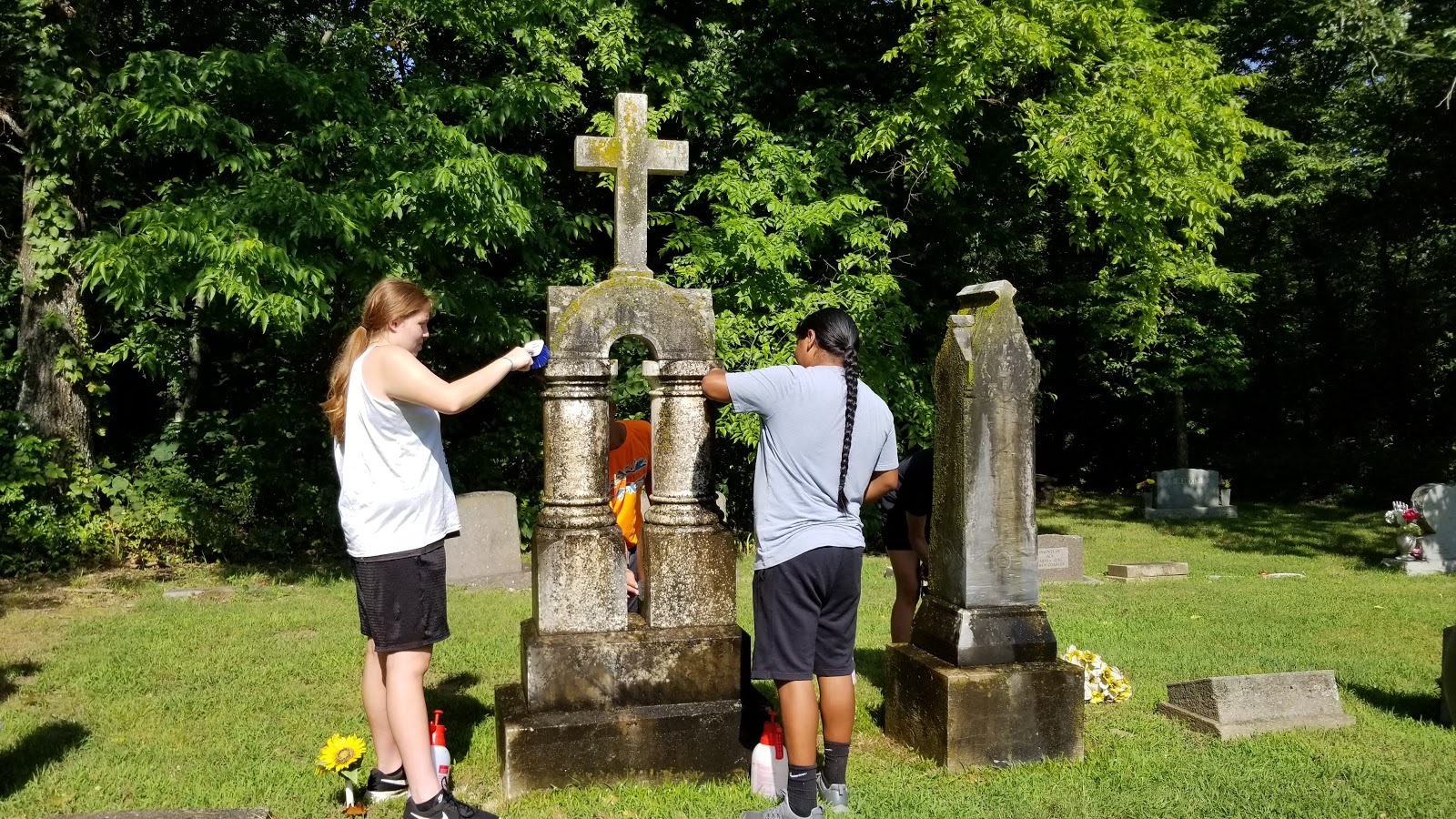April 16, 2020
The preservation of the Seneca-Cayuga Nation tombstone headstones are crucial to protecting the legacy of this great Nation. Will Tarrent, the Cultural and Historical Preservation Director for SCN, understands this more than most.
The headstone preservation project began after realizing several headstones in the cemetery had been broken in an act of vandalism. Tarrent shared his motivation for the preservation clean up: “I wanted to see the youth of our nation realize this isn’t just a graveyard within our community. It is a place that is part of their own history, where their families were buried. Keeping our traditions and culture alive for generations to come will be up to them.”
The original restoration effort involved 6 tribal youth who were a part of a summer program, the Nya’ Weh Project. Their ages ranged from 14-18 years old and their involvement with the project focused on deep cleaning headstones while establishing honor for the burial and cemetery grounds within the Nation.
The project began at the Ceremonial grounds and later moved to the Council House cemetery. It was a strenuous and elaborate process. At first glance, it would seem the headstones were initially covered in black and green, offering a smoke-stained type appearance, predominantly due to the overgrown growth of moss. The team used an environmentally friendly cleaner by name of D2, which kills the moss growth on the stones.
Before this process began, the stones were ilegible. After cleaning them once, the lettering became visible and the carvings and etchings of individual and family names were revealed on the headstones. As part of the restoration project, the team would level any of the headstones that had begun to lean.
Each time this process is completed, it is estimated the effects of the cleanings would last up to three years within the Oklahoma climate. The Seneca Cayuga Nation emphasizes the culture, faith and traditions of SCN. Tarrent knows it is his job as a faith keeper to ensure these continue for future generations, protecting the legacy and ancestry of SCN people.
_


